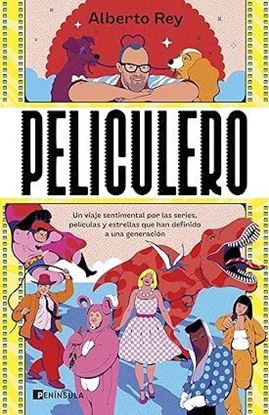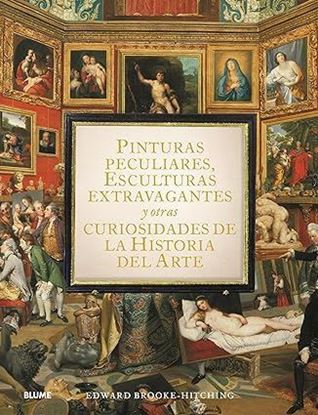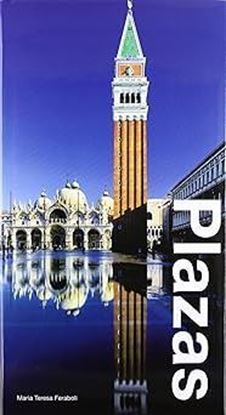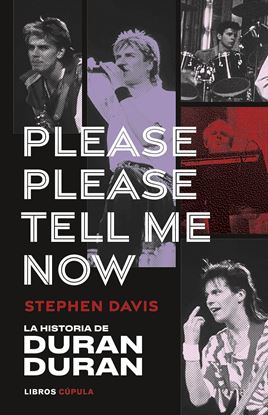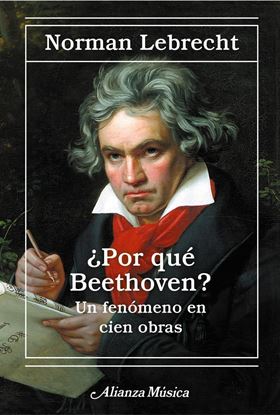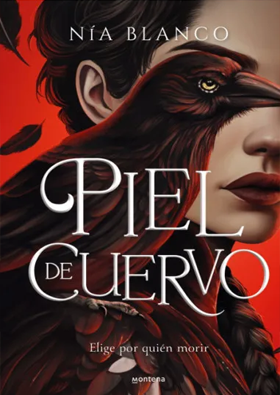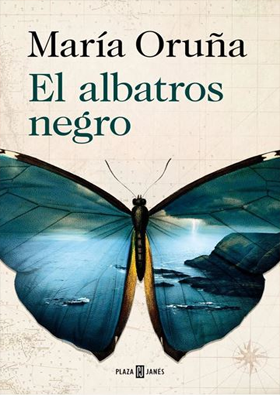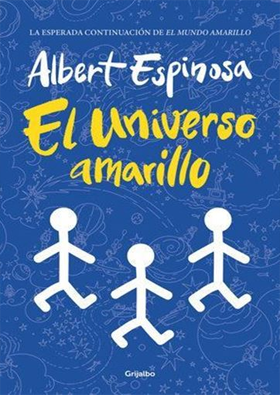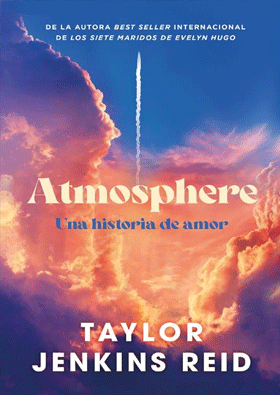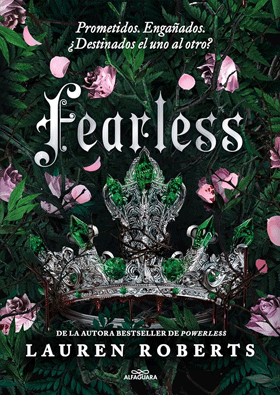

PELICULERO
Un viaje emocional por el cine y la televisión que han definido a toda una generación
Hace menos de tres años parecía que el cine estaba muerto, que nadie volvería nunca a las salas, que las grandes estrellas no existían y que solo las películas de superhéroes eran viables económicamente. Y entonces llegó Barbie.
Este es un recorrido personal tan personal que es casi universal por la historia más reciente del cine, y en particular del cine palomitero, ese cine comercial, orgulloso de serlo, que ha moldeado nuestro imaginario colectivo. Un mundo de dinosaurios, naves galácticas, agentes secretos y sirenas que Alberto empezó viendo primero desde el sofá de casa para poco a poco adentrarse en él profesionalmente. El libro se inmiscuye en rodajes de series y películas, en junkets de prensa, fiestas y premios que, junto a las mismas películas que luego vemos en la sala, configuran un universo que mezcla ficción y realidad y del que ningún peliculero podrá escapar nunca.
1,450
PICASSO, KLEE, MATISSE, GIACOMETTI
Berggruen’s collection with more than one hundred masterpieces is a spectacular tribute to the foresight of this major player in the Paris art market during the second half of the twentieth century. Born into a Jewish family in Berlin in 1914, he went into exile in California on the eve of World War II. He became art critic for the San Francisco Chronicle and assistant to the director of the San Francisco MoMA. After the war, Berggruen returned to Europe, first to Munich as a journalist, then to Paris where he worked at the UNESCO headquarters before becoming an art dealer specialized in the graphic arts of modern artists. He quickly established contacts within the Parisian cultural scene, meeting both the artists he would represent and the poets, dealers, historians, critics, and collectors of the day. Guided by his personal tastes, he built a solid collection of twentieth-century works now housed at the Neue Nationalgalerie Berlin spanning the careers of Pablo Picasso and Paul Klee and including Henri Matisse’s collages and Alberto Giacometti’s sculptures. The vast ensemble was exhibited at the Orangerie in 2024 and is housed in the Berggruen Museum/Neue Nationalgalerie Berlin.
2,800
PINTURAS PECULIARES, ESCULTURAS EXTRAVAG
El enigma de la Mona Lisa desnuda, El artista que pintó el fondo marino, Los ángeles mosqueteros del Nuevo Mundo, Los misteriosos retratos de hombres en llamas o La legión de hombres lobo del Ejército romano: una estrafalaria exploración de la vertiente más curiosa del arte, con pinturas, esculturas, dibujos y otras rarezas artísticas extrañas. Una exposición única que reúne más de cien obras magníficas, elegidas por su sorprendente belleza, su rareza y la cautivadora historia que hay detrás de su creación. Tesoros oscuros y olvidados conviven con obras maestras muy conocidas, y todos tienen historias secretas que contar. Las páginas de este libro acogen frescos medievales sobre el Juicio Final, esculturas que gritan, manuscritos mágicos, arquitectura imposible, santos con cabeza de perro y el primer retrato de un caníbal. Arte robado, arte marginal, arte fantasma, arte de venganza y arte pintado en el fondo del mar junto a muestras de arte escandaloso, falsificaciones y engaños, arte de sueños y pesadillas, y pinturas crípticas todavía por descifrar.
1,995
PLAZAS
La Plaza, feliz combinación de arquitectura y urbanismo.Un extraordinario viaje por el `Gran archivo de piedra de una comunidad`. La Plaza ha sido una de la más genuina expresión de la libertad de la comunidad, del poder religioso de la iglesia y de la fuerza de los comerciantes y mercaderes...etc. Este libro recoge las mejores fotografías de diferentes Plazas de Europa, América, Asia y Oceania.
200
PLEASE, PLEASE TELL ME NOW
En Please, Please Tell Me Now, el reconocido biógrafo de rock Stephen Davis cuenta la historia de Duran Duran. Su apariencia de niños buenos les convirtió en estrellas, pero fue su brillante maestría musical lo que los llevó a una serie de éxitos número uno. A finales de la década habían vendido 60 millones de álbumes; a día de hoy, más de 100 millones.
Davis remonta sus raíces al austero malestar británico de la década de los 70. Guapos, británicos y jóvenes, Duran Duran fueron quienes encabezaron el concierto Live Aid y la banda se movía en los círculos más glamurosos: Nick Rhodes (teclista) se hizo cercano a Andy Warhol y a la princesa Diana y John Taylor (bajista) salió con la chica mala por excelencia, Amanda De Cadanet. Con éxitos atemporales como «Hungry Like the Wolf», «Girls on film», «Save A Prayer» o el tema más vendido de James Bond, «A View To a Kill».
Con entrevistas exclusivas con la banda y fotos nunca antes publicadas de sus archivos personales, este libro ofrece el relato definitivo de una de las bandas más importantes en la historia de la música.
1,350
POR QUE BEETHOVEN?
Si Beethoven nunca hubiese existido, habitaríamos un universo musical radicalmente distinto. Pero ¿quién era realmente este titán de la cultura mundial?
A través de un centenar de breves capítulos, cada uno dedicado a alguna de sus obras clave, Norman Lebrecht traza un retrato poliédrico que nos muestra al compositor como nunca lo habíamos visto. Ingobernable, ofensivo y desesperado durante la mayor parte de su vida, sí; pero también sensible y completamente entregado a su arte, capaz de sobreponerse a la sordera para componer algunas de las obras cumbre de nuestra cultura. Por el camino, nos encontramos con los grandes músicos que a lo largo de la historia han asumido el reto que Beethoven legó a la posteridad, en todas sus glorias y debilidades. En el centro del mosaico que dibuja esta biografía reveladora y única, Beethoven emerge como piedra angular del mundo moderno.
1,500

